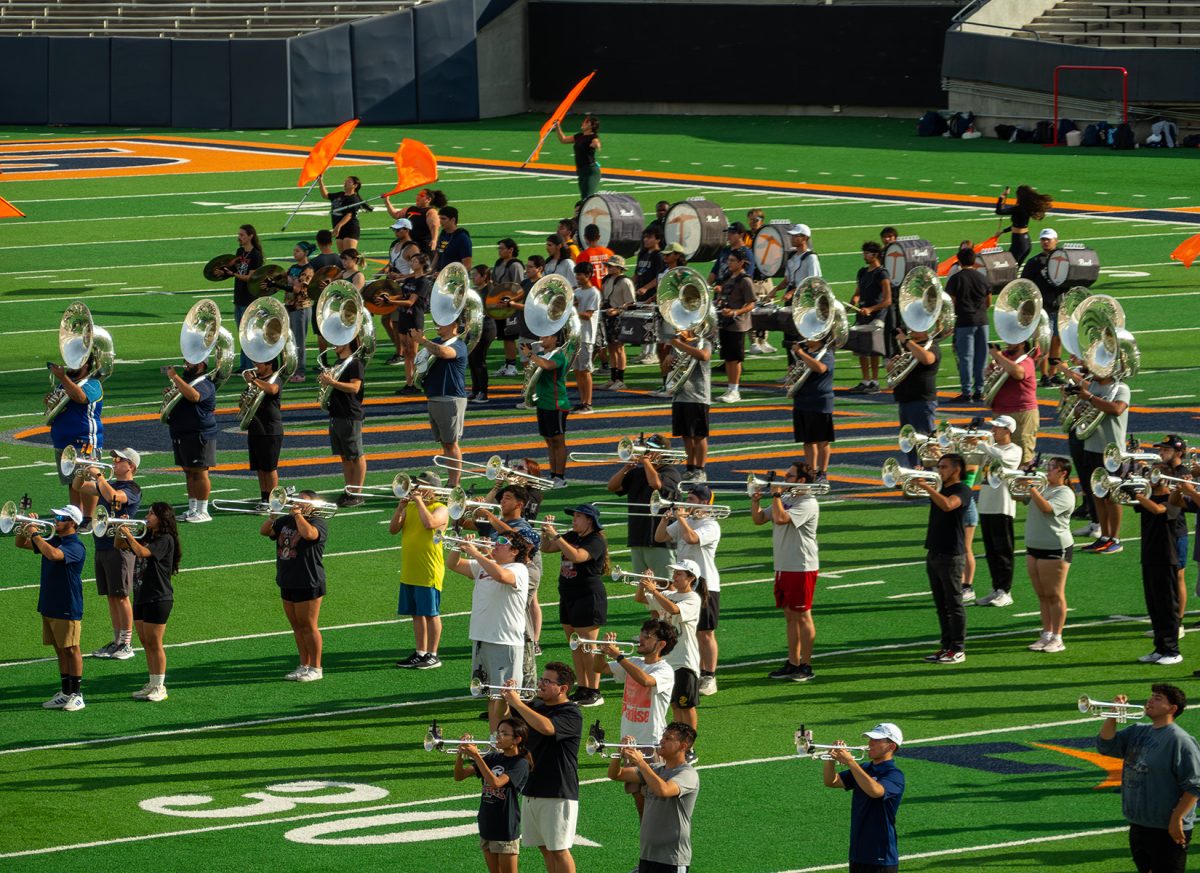From the roots of the Border Conference, 1935-1961, to the stomping grounds of the Western Athletic Conference, 1962-2005, to present-day Conference USA, UTEP athletics carries a long list of triumphant athletes with major accomplishments.
Compiling 13 total track and field national titles, seven cross country national championships and one men’s basketball national championship; UTEP’s athletic program is tied for 10th place in Division I men’s sports for national championships.
It was these programs, along with football, that helped put the Miners on the map of Texas sports. Although the Miners don’t compete in high-caliber conferences such as the Big 12 or the South Eastern Conference, the historic past speaks for itself and gives recognition to the West Texas School.
In particular, one of the most notable championships in the university’s history was the 1966 men’s basketball national championship. The win was even more historic because head coach Don Haskins was the first coach in Division I basketball to start five African American players in a game.
Prior to the championship, UTEP, known as Texas Western at the time, was one of the first institutions in the south to allow interracial athletes in their sporting programs during the early 1950s.
Being the breaker of all racial barriers wasn’t the only impact the team made in the state; the 1966 team is still the only team in the state of Texas to win a national championship in men’s basketball.
Now residing in Mountain Grove, Missouri, forward Jerry Armstrong reflects on the impact that his legendary team made to not only the state of Texas, but to the country.
“[As a team] we didn’t see the impact that the national championship made right away, but it made an immediate impact in the city of El Paso,” Armstrong said. “We started to get a lot of attention all over the country, and coach Haskins started to get letters from all over – both good and bad. It was a great impact immediately because of the racial situations.”
The 6-foot-4-inch defender was able to witness first hand the aftermath of what the victory over Kentucky did for the university’s recognition and how it influenced other schools in the region.
“It was amazing – at the time in 1966, all the racial situations across the country, especially the Southeast with all the riots. The impact that all-black starters on UTEP beat the all-white starters on Kentucky in the championship game had a great sociological impact especially in the southeast,” Armstrong said. “Before, these schools didn’t have blacks. Then, the next year, they started letting them in.”
Like basketball, track and field and cross country has a powerful legacy. Characterized as one of the most dynamic coaches in the ‘70s for track and field and cross country, head coach Wayne Vandenburg, an ex-hurdler from the University of New Mexico, impacted and influenced the two sports at UTEP for decades to come.
Vandenburg gained credibility throughout the state with his lengthy list of accomplishments – seven top-10 finishes at the NCAA Track and Field Championships and a NCAA title in 1969 for cross country.
In his half a decade with the Miners, the team won the WAC title four times in track and field and no one ever finished lower than second at the meet. Eight of his individual athletes went on to win the NCAA championship in their respective categories.
“Wayne was the first guy who was a huge hustler and he still is,” said Athletic Director Bob Stull. “Wayne was the first guy to get players from all the different countries. Once he got all the players here, then a relationship was built. That is still a big thing now because most of our long-distance runners today are from Kenya. Wayne was the first to establish these connections and now it’s going on for years and years.”
Stull, who served as a coach on the football team for the Miners in 1986-88, was named the athletic director in 1998. Since his inauguration at the position, Stull witnessed a dramatic increase in the athletic program’s admiration starting with a change in the Miner logo itself.
“We changed the logo to bringing in the pick–that was never there before,” Stull said. “We changed the colors from light orange and light blue, to red orange and navy blue. This helped with t-shirt sales and having a consistent brand gave people an understanding of who we are.”
Aside from the image changes, Stull also witnessed a spark ignited in athletics. He witnessed five bowl appearances in football, three men’s basketball NCAA tournament spots, a Women’s NIT championship game in 2014, women’s soccer reaching the first-ever NCAA tournament bid in 2005, 14 conference titles for cross country and track and field and women’s golf winning the first conference title in school history in 2011.
Stull credits the publicity of being shown on live television during Miner athletic games as a great way for the Miner athletics to be more recognized.
“Right now, with the amount of visibility we have on television by displaying our logo on air, it allows our name to reach out to different viewers,” Stull said. “All this recognition of being on television allows people to identify the logo, and that’s what athletics does. It brings alumni back on campus and when you’re on the road, these announcements help bring people together.”
Adrian Broaddus may be reached at [email protected].




